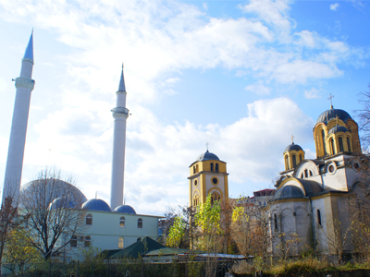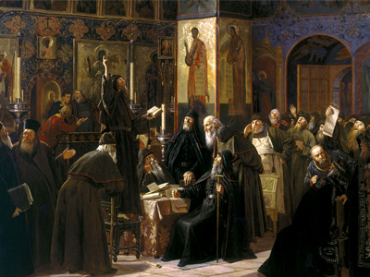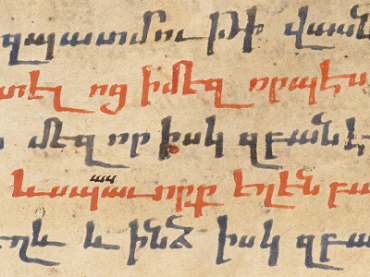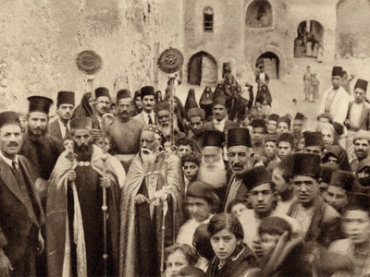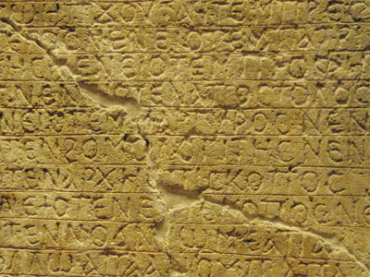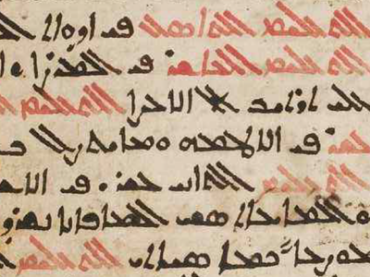Syriac and Eastern Christianity
The Vienna Dialogue
Five Pro Oriente Consultations with Oriental Orthodoxy. The Vienna Dialogue. Middle East Regional Symposium. Deir Amba Bishoy. Booklet Nr. 3
Translated by Awdit Nasif; Edited by Gregorios Yohanna Ibrahim
ISBN: 978-1-60724-266-6
This book is a translation into Arabic of The Vienna Dialogue: five Pro Oriente consultations with Oriental Orthodoxy/ Middle East Regional Symposium, Deir Amba Bishoy, October 1991 (Vienna, 1991) and contains a number of articles by Roman Catholic and Oriental Orthodox churchmen connected to the question of the relationship between these churches.
$141.00
The Vienna Dialogue
Five Pro Oriente Consultations with Oriental Orthodoxy On Councils and Conciliarity. Second Study Seminar. June 1992. Booklet Nr. 5
Translated by Marcel Taraqji; Edited by Gregorios Yohanna Ibrahim
ISBN: 978-1-60724-267-3
This is a translation into Arabic of The Vienna Dialogue: Five Pro Oriente Consultations with Oriental Orthodoxy On Councils and Conciliarity. Second Study Seminar. June 1992. Booklet No. 5 (Vienna 1993) and contains documents and communications from both Roman Catholic and Oriental Orthodox perspectives on questions relating to church councils.
$120.00
The Vienna Dialogue
Five Pro Oriente Consultations with Oriental Orthodoxy On Primacy. First Study Seminar. June 1991. Booklet Nr. 4
Translated by Marcel Taraqji; Edited by Gregorios Yohanna Ibrahim
ISBN: 978-1-60724-268-0
This is a translation into Arabic of The Vienna Dialogue: Five Pro Oriente Consultations with Oriental Orthodoxy On Primacy. First Study Seminar. June 1991. Booklet nr. 4 (Vienna, 1991) and contains documents from the discussions which took place in Vienna in June 1991 relating to the question of Papal Primacy and the various Oriental Orthodox Churches.
$129.00
The Sahidic Translation of the Book of Job
Series: Analecta Gorgiana 178
ISBN: 978-1-60724-271-0
Generally considered the leading pre-Islamic dialect of Coptic, Sahidic is an important language for Orientalists. Perhaps because of its body of original, non-translated material, Sahidic is the Coptic dialect most commonly studied outside of ecclesiastical settings. Sahidic, however, is also used as a language of translation, as in this booklet containing the biblical book of Job in that dialect. Unparalleled as a source for beginners in Coptic, this small portion of the Bible presents a familiar starting point. Coptic scholars will also find this resource worth their time as an historical example of the language and its study. Known also as Thebaic, this form of Coptic was used for translating major portions of the Bible. Since it was used by the church as well, this tract will be of interest to biblical scholars as well.
$47.00
Pieces of Late-Ripening Fruit
By Ghattas Maqdasi Elias; Introduction by Gregorios Yohanna Ibrahim
ISBN: 978-1-60724-276-5
Ghattas Maqdisi Elias, “Malphono Denho,” was perhaps the greatest Syriac poet of the twentieth century and a major figure in the Syriac literary revival which took place then. This book collects together a number of Maqdisi’s writings, including poems, a series of letters written to Abrohom Nouro, selected Syriac and Arabic essays, as well as the Maqdisi’s last interview (conducted in English).
$169.00
Jacob of Sarug’s Homilies on Elisha
Metrical Homilies of Mar Jacob of Sarug
Translation and Introduction by Stephen A. Kaufman
Series: Texts from Christian Late Antiquity 28
ISBN: 978-1-60724-302-1
This edition of Mar Jacob of Sarug's (d. 521) homilies on the prophet Elisha deals with some of the more difficult stories in the Old Testament, how to understand the story of the bears who ravage the children who made fun of the prophet and why the sacrifice by the King of Moab of his son to his pagan god was seemingly successful. The volume constitutes a fascicle of The Metrical Homilies of Mar Jacob of Sarug, which, when complete, will contain the original Syriac text of Jacob's surviving sermons, fully vocalized, alongside an annotated English translation.
$83.00
Divine Manifestations in the Slavonic Pseudepigrapha
Series: Orientalia Judaica Christiana 2
ISBN: 978-1-60724-407-3
This volume explores the formative theophanic patterns found in pseudepigraphical writings as 2 Enoch, Apocalypse of Abraham, and the Ladder of Jacob where the visual tradition of the divine Form and the aural tradition of the divine Name undergo their creative conflation and thus provide the rich conceptual soil for the subsequent elaborations prominent in later patristic and rabbinic traditions. The visionary and aural traditions found in the Slavonic pseudepigrapha are especially important for understanding the evolution of the theophanic trends inside the eastern Christian environment where these Jewish apocalyptic materials were copied and transmitted by generations of monks.
$161.00
Jacob of Sarug’s Homilies on the Six Days of Creation (The First Day)
The First Day
Edited and Translated by Edward G Mathews Jr
Series: Texts from Christian Late Antiquity 27
ISBN: 978-1-60724-323-6
Jacob of Sarug's (d. 521) homily constitutes the first example of a Hexameron, or Commentary on the Six Days of Creation, in Syriac literature. This edition presents Jacob’s comments on the first day, Gen. 1:1-5. The volume constitutes a fascicle of The Metrical Homilies of Mar Jacob of Sarug, which, when complete, will contain the original Syriac text of Jacob's surviving sermons, fully vocalized, alongside an annotated English translation.
$34.00
The Syriac Orthodox Patriarchal Register of Dues of 1870
An Unpublished Historical Document from the Late Ottoman Period
Series: Gorgias Eastern Christian Studies 17
ISBN: 978-1-60724-427-1
This monograph presents an unpublished historical resource in the form of a register of dues collected for the Syriac Orthodox Patriarchate during the second half of the nineteenth century. Bcheiry provides the original text, an English translation, and an extensive socio-economic study.
$178.00
Teachings on the Prayer of the Heart in the Greek and Syrian Fathers
The Significance of Body and Community
By Jill Gather
ISBN: 978-1-60724-729-6
The prayer of the heart is an early Christian contemplative tradition of striking profundity and beauty. Christian authors of the Greek- as well as the Syriac-speaking world placed the heart at the center of a mystical theology that viewed the body as a God-given instrument of divine ascent and the relational setting of Christian existence as an important means of experiencing God’s abiding inner presence. This work sheds light on the Syrian church’s approach to the mystery of the divine encounter.
$157.00
A List of Syriac Orthodox Ecclesiastic Ordinations from the Sixteenth and Seventeenth Century
The Syriac Manuscript of Hunt 444 (Syr 68 in Bodleian Library, Oxford)
Series: Gorgias Eastern Christian Studies 21
ISBN: 978-1-60724-621-3
The Bodleian Library in Oxford currently holds an unpublished historical document in Syriac containing precious historical information about the ordination of bishops, priests, monks, and deacons. Bcheiry gives the text and translation, and focuses on the importance of the data found in this historical list which he compares with other historical data found in other sources.
$158.00
Catalogue of the Malphono Abrohom Nuro Collection
By Abrohom Nuro; Introduction by George Anton Kiraz
Series: Abrohom Nuro Library 1
ISBN: 978-1-60724-332-8
The Abrohom Nuro library is arguably the richest private collection of Syriac material, especially containing rare titles published in the Middle East in the 1800s and early 1900s. Nuro presents here a checklist of the collection.
$141.00
The Paradise of Eden
By Abdisho of Nisibis; Edited by Joseph E. Y. De Kelaita
Series: Abrohom Nuro Library 2
ISBN: 978-1-60724-333-5
Abdisho bar Brikha (d. 1318) was a prominent East Syriac writer. While many of his works did not survive, his The Paradise of Eden, a collection of theological poetry, reached us. This edition is based on the rare Urmia (1916) and Mosul (1928) text editions by J. de Kelaita.
$173.00
Bar Hebraeus' Poem on Divine Wisdom
Carmen de divina sapientia, auctore celeberrimo viro Abulpharagio Gregorio filio Haronis Bar-Hebraeo
Edited by Ioannis Notayn Darauni
Series: Abrohom Nuro Library 3
ISBN: 978-1-60724-334-2
This is a rare edition of Barhebraeus’ poem “On Divine Wisdom” by Ioannes Notayn Darauni (Yūḥannā Nuṭayn al-Dar‘ūnī) was first published in 1880. The Syriac text of the poem is accompanied by detailed footnotes giving Arabic glosses for the difficult words.
$138.00
Barhebraeus' Book of the Pupils of the Eye
Ktobo d-boboto
ISBN: 978-1-60724-335-9
The Book of the Pupils of the Eye is a short compendium of Aristotelian logic by Barhebraeus. This facsimile edition reproduces a manuscript of the work copied by Ya‘qub b. Buṭrus Sākā in 1896. Ignatius Ephrem Barṣaum made corrections to the text on the basis of another manuscript in 1904.
$195.00
Barhebraeus' Book of Conversation of Wisdom
Ktobo da-swod sufiya
ISBN: 978-1-60724-336-6
The Book of Conversation of Wisdom is a compendium of Aristotelian philosophy by Barhebraeus in four chapters: logic, the natural sciences, metaphysics and religious matters. This facsimile edition reproduces a manuscript transcribed in 1902.
$142.00
Arabic Sources for Syriac Studies
By George Awwad
Series: Kiraz References Archive 5
ISBN: 978-1-60724-337-3
This comprehensive reference work provides bibliographical and manuscript data to Arabic works in the field of Syriac studies, both published and unpublished. The book contains over 2,000 subject and title entries.
$223.00
History of Eastern Christianity
Series: Gorgias Eastern Christian Studies 16
ISBN: 978-1-60724-343-4
This book is a classic in the history of the Oriental Churches, which are sometimes portrayed as heretical in general church history books, if mentioned at all. Written by a Copt, it portrays the history of the faith of these non-Chalcedonian Churches with first-hand knowledge of their traditions. The author covers Alexandrine Christianity (the Copts and the Ethiopians), the Church of Antioch (Syriac Orthodox), the “Nestorian” Church of the East, the Armenian Church, the St. Thomas Christians of South India, the Maronite Church, as well as the Vanished Churches of Carthage, Pentapolis, and Nubia.
$230.00
Christian and Muslim Dialogues
The Religious Uses of a Literary Form in the Early Islamic Middle East
Series: Gorgias Eastern Christian Studies 29
ISBN: 978-1-61143-920-5
Linked by a common geography and claim to the true religion, Christians and Muslims had a long history of interreligious discourse up to the Crusades. These faith communities composed texts in the form of dialogues in light of their encounters with one another. This book surveys the development of the genre and how dialogues determined he patterns of conversation. Each chapter highlights a thematic feature of the literary form, demonstrating that Christian and Muslim authors did not part ways in the first century of Islamic rule, but rather continued a dialogue commending God’s faithful believers.
$188.00
The Canons of Hippolytus
Edited by Paul Bradshaw; Translated by Carol Bebawi
Series: Kiraz Liturgical Studies 7
ISBN: 978-1-60724-347-2
The fifth or sixth century document known as the 'Canons of Hippolytus' is a set of thirty-eight canons with a concluding sermon. They are presented here translated into English with an introduction.
$138.00
Essays in Early Eastern Initiation
Edited by Paul Bradshaw
Series: Kiraz Liturgical Studies 12
ISBN: 978-1-60724-363-2
Paul Bradshaw, Maxwell Johnson, and Ruth Meyers write on baptismal practice in the Alexandrian tradition, reconciling Cyril and Egeria on the catechetical process, and the structure of the Syrian baptismal rite.
$110.00
Liturgy in Ancient Jerusalem
Series: Kiraz Liturgical Studies 13
ISBN: 978-1-60724-364-9
This brief study investigates the liturgy of Jerusalem, a church which had a far-reaching and permanent effect on the rest of Christianity; initiation, the Eucharist, the Daily Office and the liturgical year are considered.
$110.00
The Missing Oblation'
The Contents of the Early Antiochene Anaphora
Edited by John Fenwick
Series: Kiraz Liturgical Studies 15
ISBN: 978-1-60724-366-3
This concise study considers the Anaphoras of the Apostles and the Liturgy of John Chrysostom. Also included is the relationship between these pieces and the Anaphora of the Apostolic Constitutions book viii.
$138.00
The Liturgical Portions of the Apostolic Constitutions
Edited and Translated by W. Jardine Grisbrooke
Series: Kiraz Liturgical Studies 17
ISBN: 978-1-60724-368-7
A text for students, with translation, introduction and annotations.
$149.00
The Testamentum Domini
Translated and Annotated by Grant Sperry-White
Series: Kiraz Liturgical Studies 22
ISBN: 978-1-60724-373-1
A Text for Students, with Introduction, Translation and Notes.
$138.00
Filter by
Filter by price
Filter by manufacturer

